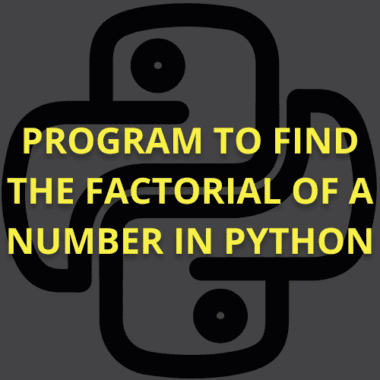Summary: Python data types define the values variables can hold, influencing data processing. Key types include numeric, sequence, text, set, mapping, boolean, and binary. Understanding these types and conversion methods improves coding efficiency. Mastering Python data types helps developers write cleaner, optimised, and flexible code for various applications.
Introduction
Python is a versatile programming language, and understanding Python data types is essential for writing efficient code. Data types determine the type of value a variable can hold, influencing the way data is processed and manipulated.
This blog will explore Python data types and their practical applications to enhance your programming skills. The demand for Python developers has skyrocketed in recent years, with a 41% global increase, as reported by GitHub.
Additionally, Python’s popularity surged by 22.5% year-over-year in 2022, making it the most widely used programming language, according to the PYPL index.
Key Takeaways
- Python has multiple data types: numeric, sequence, set, mapping, boolean, and binary.
- Understanding data types helps optimise memory usage and write efficient code.
- Strings are immutable, while lists and dictionaries are mutable.
- Python supports implicit and explicit type conversion for flexibility.
- Mastering data types improves coding accuracy and enhances problem-solving.
Numeric Types
In Python, Numeric types refer to types of values that represent numbers. There are three main kinds: Integers, Floating-point numbers, and Complex numbers. Let’s break them down:
Integers
These are whole numbers, meaning they do not have any decimal points. For example, numbers like 1, 10, and -5 are integers. They are used whenever you need to count things or deal with whole quantities.
Floating-point numbers
These numbers are like integers but have decimal points. For example, 3.14, -0.5, and 2.0 are floating-point numbers. They are helpful when you need to represent values like distances, weights, or anything that requires precision with fractions.
Complex numbers
These might sound tricky, but they are just numbers with two parts: real and imaginary. For example, 3 + 4j is a complex number, where 3 is the real part, and 4j is the imaginary part. You typically use complex numbers in advanced math or science-related tasks.
Sequence Types
In Python, Sequence types store multiple values in a specific order. The main types in this category are Lists, Tuples, and Ranges. Let’s look at each of them:
Lists
A list is like a collection of items that can hold different data types. You can think of it as a shopping list where you can add, remove, or change items anytime. For example, [1, 2, 3, “apple”, “banana”] is a list that holds both numbers and words. Lists are flexible and commonly used in many programs.
Tuples
A tuple is similar to a list, but it cannot be changed once it’s created. This means you can’t add, remove, or alter the items in a tuple. Tuples are like ” locked ” lists and are great when you want to keep data safe from accidental changes. For example, (1, 2, 3) is a tuple.
Ranges
A range is a sequence of numbers, often used in loops or to create a set of numbers for a specific purpose. For example, range(5) will create numbers from 0 to 4. It’s helpful when you need a series of numbers without manually typing them all.
Text Type
In Python, the Text type refers to handling words or any kind of text. This is done using Strings. A string is a sequence of characters, which can be letters, numbers, or even special symbols like @, #, or $. For example, “Hello, World!” is a string. Anything enclosed in quotation marks (single or double) is considered a string in Python.
Strings are mighty because they let you work with text in many ways. Here are some key properties of strings:
- Immutability: Once you create a string, you can’t change its characters. If you want to modify it, you have to create a new string.
- Indexing: You can access specific characters in a string using numbers. The first character is at position 0, the second at position 1, etc. For example, in the string “Python”, “P” is at position 0.
- Concatenation: You can join strings together using the + operator. For example, “Hello” + ” ” + “World!” will give you “Hello World!”.
- Length: You can find out how many characters are in a string using the len() function.
Set Types
In Python, Set types are used to store collections of unique items. Unlike lists or tuples, sets don’t allow duplicate values, and they don’t store items in any particular order. There are two main types of sets in Python: Sets and Frozensets.
Sets
A set is like a collection of items where each can appear only once. For example, if you have a set of numbers like {1, 2, 3}, you can’t have a repeated number like 2 in the same set. Sets are helpful when you need to make sure all the items in your collection are unique, like when you want to list all the different fruits in a basket or colours in a box.
Frozensets
A frozenset is very similar to a set, but the key difference is that it cannot be changed once created. You can’t add, remove, or update items in a frozenset. It is useful when you need to store a collection of unique items but don’t want anyone to modify it by mistake.
Mapping Type
The Mapping type in Python refers to a special type of data structure that stores pairs of information. Each pair consists of a key and a value. This type is proper when you need to link pieces of information together meaningfully. The most common example of this is Dictionaries.
A Dictionary in Python is like a real-life dictionary where you look up a word (the key) to find its meaning (the value). In Python, a dictionary lets you store a data collection, where each item has a unique key associated with its value. For example, you can store the name of a person (the key) and their phone number (the value).
Here’s a simple example of a dictionary:
In this example, “name”, “age”, and “city” are the keys, and “John”, 25, and “New York” are the corresponding values.
Dictionaries are very flexible and efficient for looking up data. You can quickly find the value associated with a specific key without searching through the entire collection. This makes them extremely useful for organising and retrieving information in Python.
Boolean Type
The Boolean type in Python is one of the simplest yet most important data types. It deals with only two values: True and False. These values are like answers to yes or no questions and are used to make decisions in programming.
In everyday life, when you ask a question, you might get a response like “Yes” or “No.” Similarly, the Boolean type in Python helps the program decide what action to take next based on certain conditions. For example, when you check if a number is greater than 10, Python might return True if the condition is met or False if it isn’t.
Boolean values are also essential in creating logical statements. For example, you can ask the program, “Is it raining?” and it will answer with either True (if it is raining) or False (if it isn’t). These values help control program flow, such as making decisions or repeating actions based on certain conditions.
Binary Types
In Python, Binary Types are used to represent data in the form of binary, which is the language computers understand best. This type of data is made up of 0s and 1s. Python has three main types of binary data: Bytes, Bytearray, and Memoryview.
Bytes
This type stores data as a sequence of bytes, which are small chunks of information. Each byte represents a character or piece of data. For example, when you want to store a word like “hello” in a computer, Python would store each letter as a byte. Bytes are often used when working with files or network data.
Bytearray
Similar to Bytes, but with a key difference: Bytearray allows you to modify the data. While Bytes are fixed and cannot be changed, Bytearray is a container you can update by adding or removing data. This makes Bytearray worthwhile when you need to work with raw binary data and change it on the go.
Memoryview
This type allows you to view and access binary data stored in other objects without copying it. Think of it as a window through which you can look at and work with data stored in different places without changing the original data.
Type Conversion
In Python, Type Conversion is changing one type of data into another. Sometimes, Python automatically changes data types for you, while other times, you might need to do it manually. There are two ways this happens: Implicit and Explicit type conversion.
Implicit Type Conversion
This happens automatically when Python changes a data type for you without asking. For example, if you add an integer (whole number) and a float (number with decimals), Python will automatically convert the integer into a float to operate. For example, adding 5 (integer) and 3.2 (float) will give you 8.2 (float). Python takes care of this for you without worrying about it.
Explicit Type Conversion
Sometimes, you must tell Python to convert one data type to another. You can do this using built-in functions like int(), float(), or str(). For example, if you have a number in string format, like “10”, and you want to turn it into an actual number, you can use int(“10”) to convert it into an integer. In this case, you are telling Python what to do rather than letting it happen automatically.
Closing Thoughts
Understanding Python data types is essential for writing efficient and error-free code. From numeric and sequence types to sets, mappings, and binary data, each type serves a specific purpose in organising and processing information. Knowing how to convert between types allows for greater flexibility in coding.
Mastering these concepts enhances problem-solving skills and improves the efficiency of Python applications. Whether you’re handling text, numbers, or structured data, Python provides robust tools to manage them effectively. By leveraging the correct data types, developers can write cleaner, more optimised programs and build powerful applications in data science, web development, and beyond.
Frequently Asked Questions
What are the Primary Data Types in Python?
Python has several core data types, including numeric types (integers, floats, and complex numbers), sequence types (lists, tuples, ranges), text type (strings), set types (sets and frozensets), mapping type (dictionary), boolean type (True/False), and binary types (bytes, bytearray, memoryview).
Why is Understanding Python Data Types Important?
Understanding Python data types helps developers write efficient code, avoid errors, and optimise memory usage. Each data type serves a distinct function, such as storing numbers, handling text, or managing structured data. Knowing how to use and convert them improves coding accuracy, performance, and problem-solving capabilities.
How Do You Convert Data Types in Python?
Python supports type conversion using built-in functions like int(), float(), and str(). Implicit conversion happens automatically, such as when adding integers and floats. Explicit conversion requires manually changing a data type, like converting a string to a number using int(“10”). Type conversion ensures flexibility in programming.




